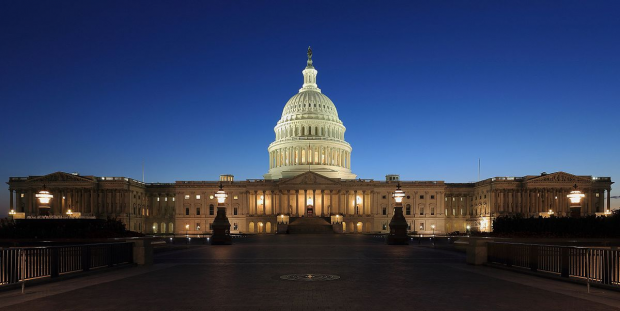Higher Education Funding Remains Flat in Federal Spending Bill for 2023-24 Fiscal Year
By Joy LiwanagThe final federal spending package for the 2023–24 fiscal year, released Thursday, brings a mix of relief and concern for higher education institutions across the United States. While the bill provides mostly level funding for higher education, it also introduces some changes that have left university administrators and educators contemplating their implications.

(Photo : WIKIMEDIA COMMONS / Martin Falbisoner)
The stability in funding offers a degree of reassurance to universities grappling with financial uncertainties exacerbated by the COVID-19 pandemic. However, concerns linger regarding the adequacy of the allocated funds to address the evolving needs of students and researchers.
Flat Funding and Its Ramifications
Total federal student aid assistance remains flat at $24.6 billion, disappointing many who had hoped for increased support, particularly in the wake of economic challenges exacerbated by the COVID-19 pandemic. The decision to maintain the maximum yearly Pell Grant award per student at $7,395 reflects a missed opportunity to address the rising costs of education and the financial strain on students from low-income backgrounds. Advocates for equity in education express disappointment, emphasizing the importance of increased investments to support underprivileged students.
On the research front, agencies like the National Institutes of Health (NIH) and the National Science Foundation (NSF) face cuts in funding, hindering crucial scientific endeavors and biomedical research. Despite calls for continued investments in these areas, the allocated budgets fall short of what experts deem necessary to drive meaningful progress and innovation.
The impact of flat funding extends beyond student aid and research, affecting various programs and initiatives aimed at promoting diversity, equity, and inclusion in higher education. With limited resources, institutions may struggle to address systemic barriers and support marginalized student populations effectively.
READ ALSO: Biden's Ambitious Higher Education Budget for 2025: Free Community College and Pell Grant Increases
An End to a Chaotic Budget Cycle
The passing of the spending bill brings an end to a tumultuous budget cycle marked by uncertainty and contention. The prolonged negotiations and delays have left higher education stakeholders on edge, uncertain about the future of funding and support for their institutions. The bill's release is met with a sigh of relief as it averts the deep cuts and shutdown threats that loomed over the sector.
However, the overall sentiment remains mixed, with many expressing disappointment over the missed opportunities for significant investments in education and research. While the stability in funding is welcomed, there is a recognition that more needs to be done to address the pressing challenges facing higher education in the United States.
In response to the bill, university leaders emphasize the importance of continued advocacy and collaboration to ensure that the needs of students and researchers are met. They call for a renewed commitment to prioritizing education and innovation, emphasizing the pivotal role that universities play in driving societal progress and economic growth.
Moving forward, educators, administrators, and policymakers will need to work together to navigate the evolving landscape of higher education funding and support. Despite the challenges posed by budget constraints and competing priorities, there is optimism that by working together, they can overcome obstacles and chart a course towards a brighter future for higher education in the United States.
RELATED ARTICLE: FAFSA Fiasco: Education Department Admits Another Calculation Error, Affecting Aid Estimates for Thousands








